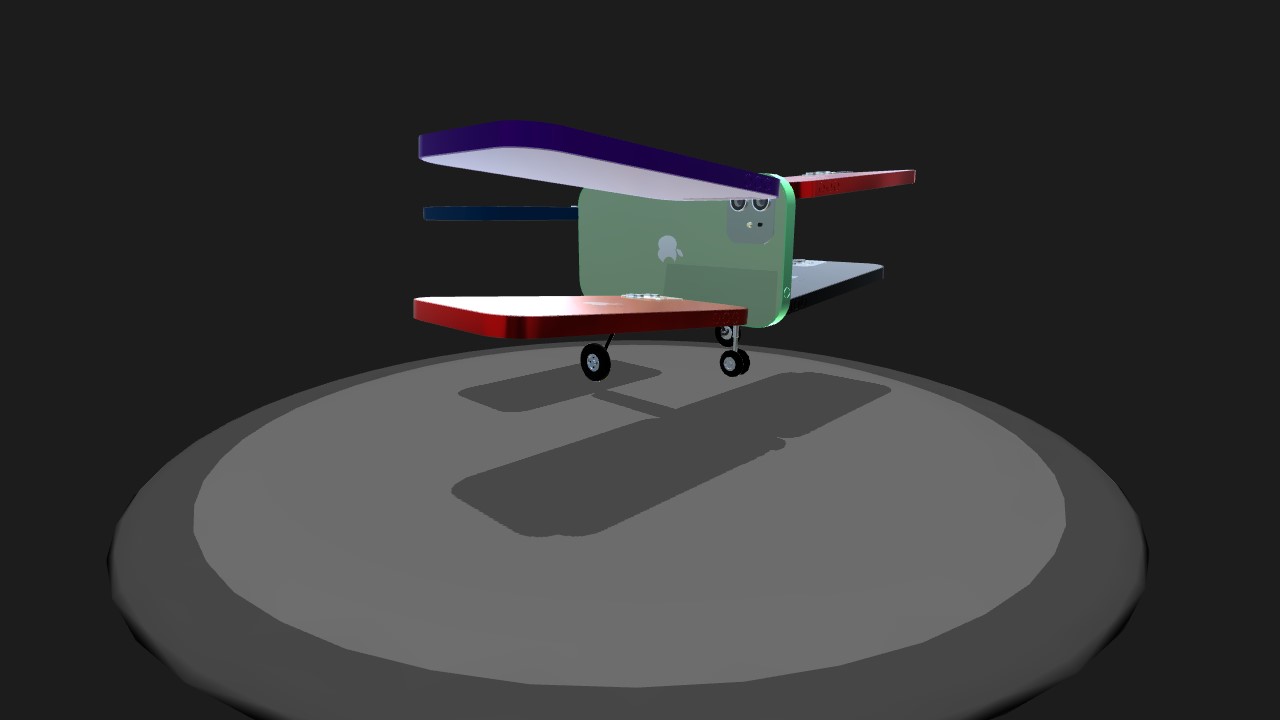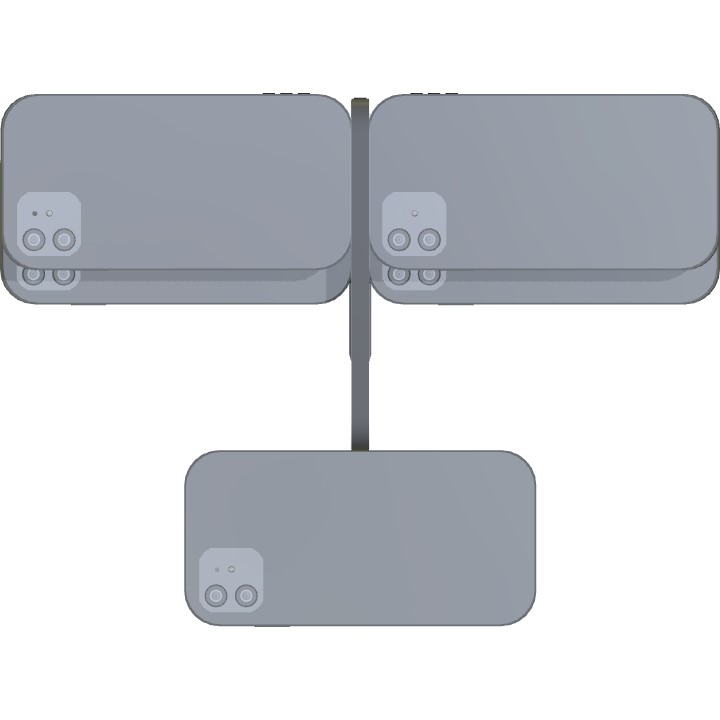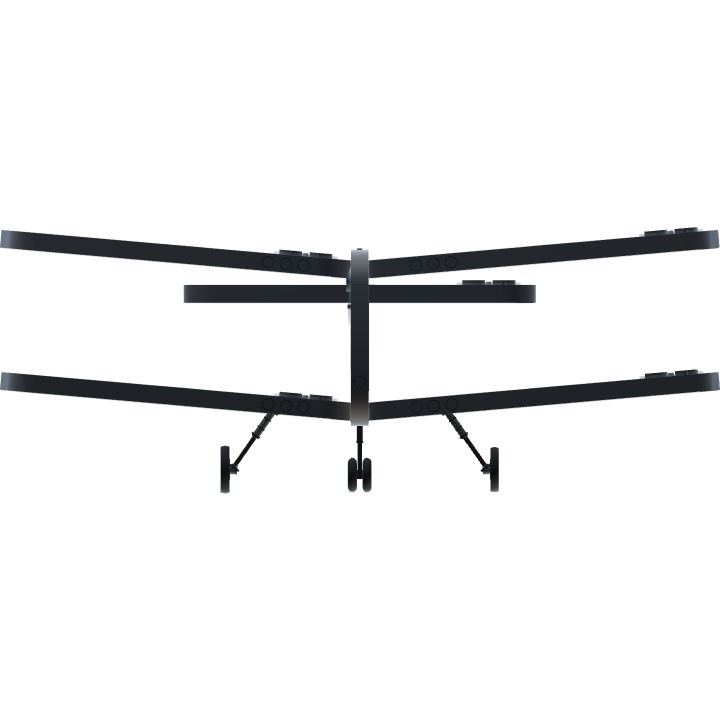No Tags
Specifications
General Characteristics
- Predecessor Flying iPhone
- Created On iOS
- Wingspan 33.5ft (10.2m)
- Length 24.9ft (7.6m)
- Height 12.4ft (3.8m)
- Empty Weight 12,645lbs (5,735kg)
- Loaded Weight 16,038lbs (7,274kg)
Performance
- Power/Weight Ratio 0.21
- Wing Loading 12.6lbs/ft2 (61.7kg/m2)
- Wing Area 1,268.8ft2 (117.9m2)
- Drag Points 9370
Parts
- Number of Parts 284
- Control Surfaces 7
- Performance Cost 1,612







@KNIGHTOFBRUH FBI OPEN UP!!!
@Coolman1000 Pratt & Whitney is an American aerospace manufacturer with global service operations. It is a subsidiary of Raytheon Technologies. Pratt & Whitney's aircraft engines are widely used in both civil aviation (especially airlines) and military aviation. Its headquarters are in East Hartford, Connecticut.[2] As one of the "big three" aero-engine manufacturers, it competes with General Electric and Rolls-Royce, although it has also formed joint ventures with both of these companies. In addition to aircraft engines, Pratt & Whitney manufactures gas turbines for industrial and power generation, and marine turbines. In 2017, the company reported that in 2014 they had 38,737 employees[2] supporting more than 11,000 customers in 180 countries around the world. In 2013, Pratt & Whitney's revenue totaled $14.5 billion.[3]
Contents
History
Early history
In April 1925, Frederick Rentschler, an Ohio native and former executive at Wright Aeronautical, was determined to start an aviation-related business of his own.[4] His social network included Edward Deeds, another prominent Ohioan of the early aviation industry, and Frederick's brother Gordon Rentschler, both of whom were on the board of Niles Bement Pond, then one of the largest machine tool corporations in the world. Frederick Rentschler approached these men as he sought capital and assets for his new venture. Deeds and G. Rentschler persuaded the board of Niles Bement Pond that their Pratt & Whitney Machine Tool (P&WMT) subsidiary of Hartford, Connecticut, should provide the funding and location to build a new aircraft engine being developed by Rentschler, George J. Mead, and colleagues, all formerly of Wright Aeronautical.[4] Conceived and designed by Mead,[4] the new engine would be a large, air-cooled, radial design. Pratt & Whitney Machine Tool was going through a period of self-revision at the time to prepare itself for the post-World War I era, discontinuing old product lines and incubating new ones.[4] World War I had been profitable to P&WMT, but the peace brought a predictable glut to the machine tool market, as contracts with governments were canceled and the market in used, recently built tools competed against new ones. P&WMT's future growth would depend on innovation. Having idle factory space and capital available at this historical moment, to be invested wherever good return seemed available,[4] P&WMT saw the post-war aviation industry, both military and civil (commercial, private), as o
mom help
Uhh what? @KNIGHTOFBRUH
The United States Postal Service (USPS; also known as the Post Office, U.S. Mail, or Postal Service) is an independent agency of the executive branch of the United States federal government responsible for providing postal service in the United States, including its insular areas and associated states. It is one of the few government agencies explicitly authorized by the United States Constitution.
The USPS traces its roots to 1775 during the Second Continental Congress, when Benjamin Franklin was appointed the first postmaster general; he also served a similar position for the colonies of the Kingdom of Great Britain.[5] The Post Office Department was created in 1792 with the passage of the Postal Service Act. It was elevated to a cabinet-level department in 1872, and was transformed by the Postal Reorganization Act of 1970 into the United States Postal Service as an independent agency.[6] Since the early 1980s, many direct tax subsidies to the USPS (with the exception of subsidies for costs associated with disabled and overseas voters) have been reduced or eliminated.[7]
The USPS, as of 2019, has 469,934 career employees and 136,174 non-career employees.[citation needed] The Postal Service is legally obligated to serve all Americans, regardless of geography, at uniform price and quality.[citation needed] The Post Office has exclusive access[8] to letter boxes marked "U.S. Mail" and personal letterboxes in the United States, but has to compete against private package delivery services, such as United Parcel Service, FedEx, and Amazon.[9]